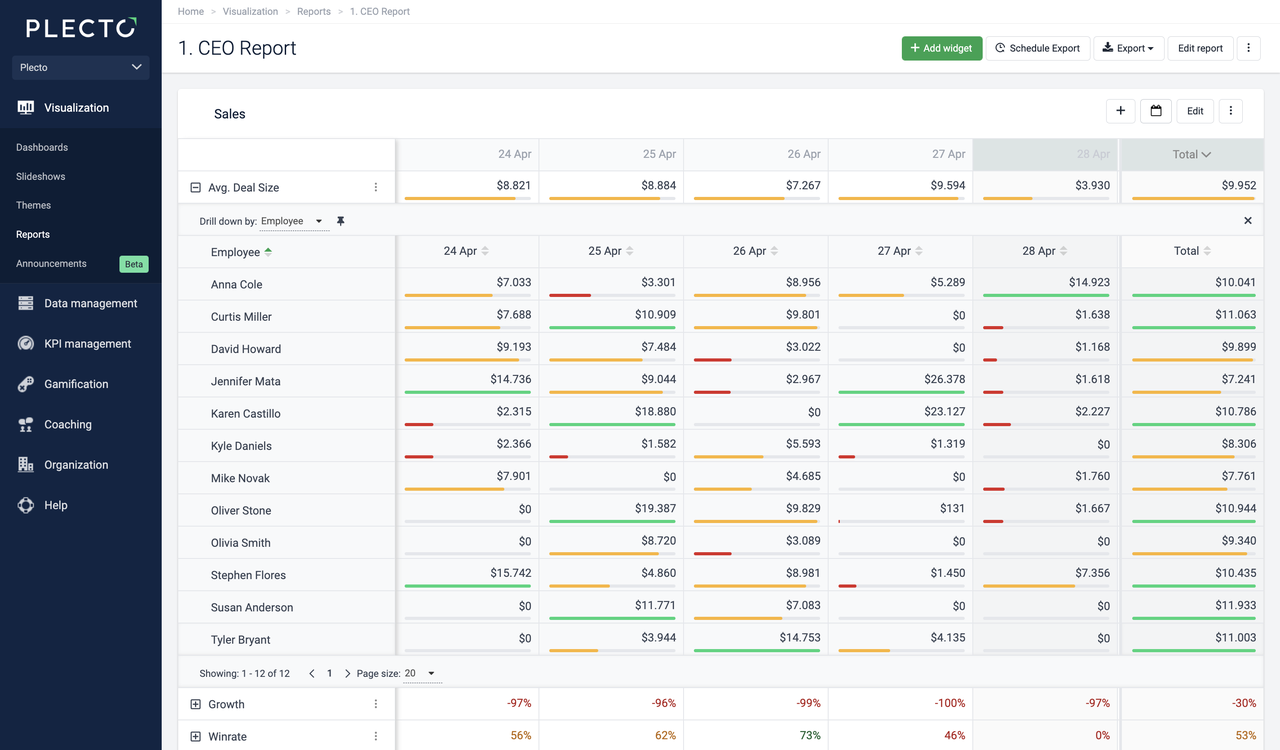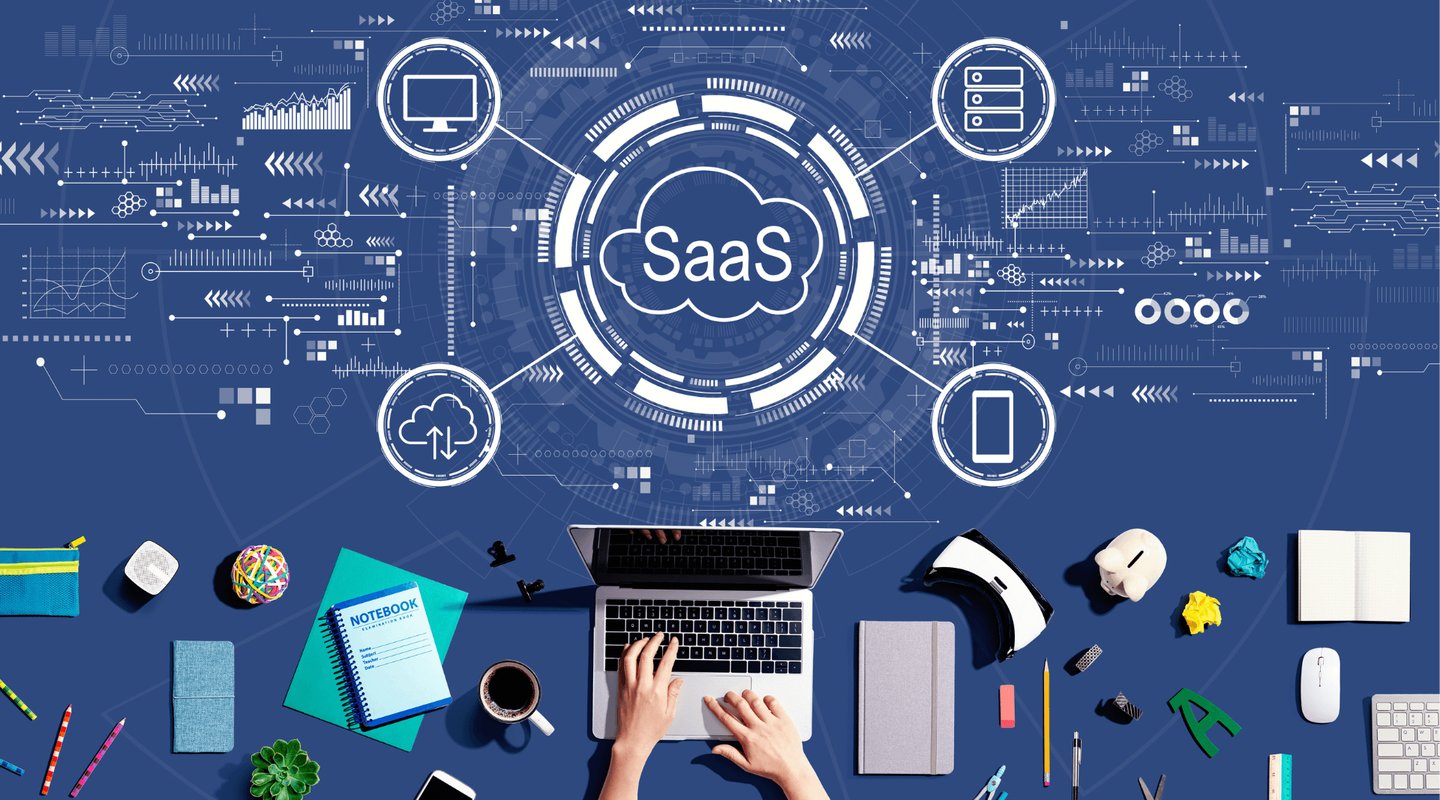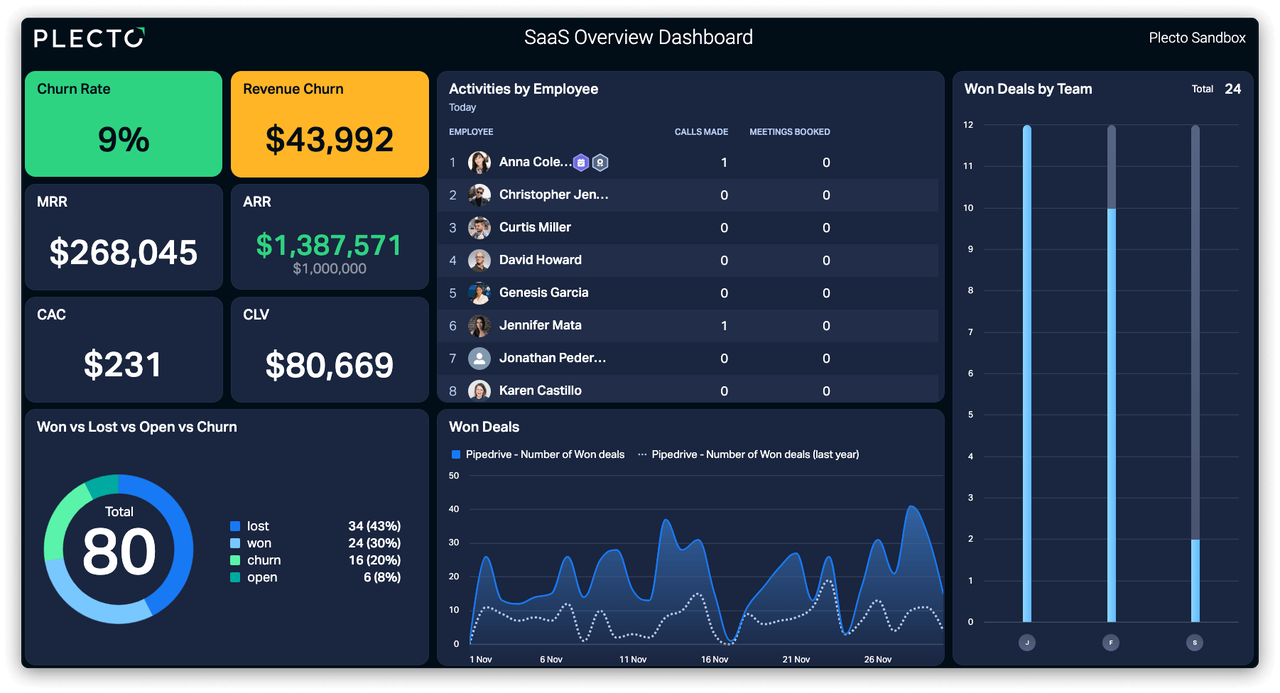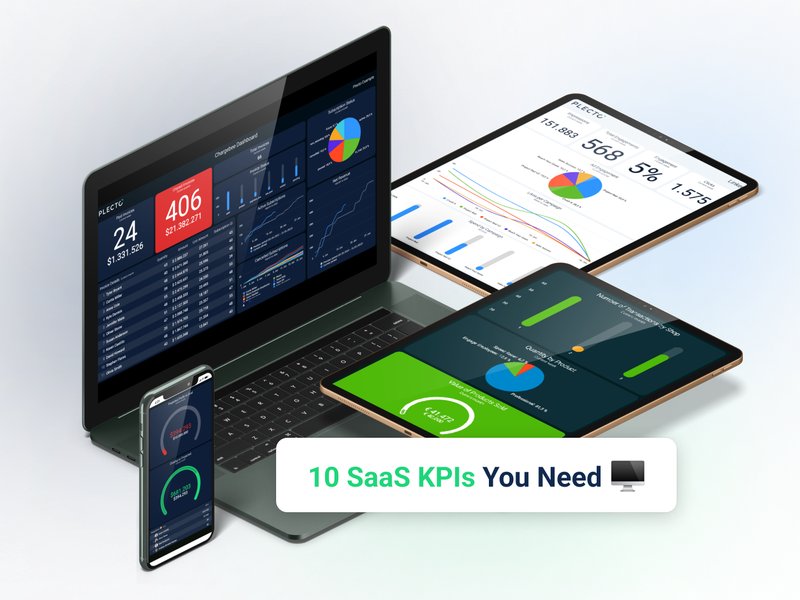Are you ready to take your SaaS business to new heights?
As an integral part of the tech industry, SaaS companies provide businesses and individuals with innovative software and tools necessary for success. However, as with any industry, there are hurdles to overcome. From market competition to resource constraints and team management, SaaS challenges can make growth seem daunting. But don't let these obstacles hold you back!
In this article, we'll explore common SaaS challenges and provide practical strategies for overcoming them. With innovation, creativity, and the right approach, your SaaS business can thrive. So, let's dive in and discover how to take your business to the next level.
1. Stand Out From the Competition

Let's face it, the SaaS industry is cutthroat. It's a race to capture the attention of potential customers and retain them in the long run. With new players entering the market every day, it's important to have a solid strategy to set yourself apart from the rest. But this is probably the toughest SaaS challenge, considering the huge market in this industry.
To survive and thrive in the industry, you need to be innovative, agile, and adaptable. You need to have a deep understanding of your target audience and their pain points. You need to have a product that solves their problems better than anyone else in the market. You need to build a brand that resonates with them and makes them loyal customers.
According to a recent study, the SaaS industry is projected to reach $195 billion by the end of 2023. This means that the competition will only get fiercer. However, this also means that there is ample opportunity to grow and succeed if you have the right strategies in place.
So, how do you stand out in a crowded market?
Offer a Differentiated Product or Service
Having a differentiated product or service is one of the most common challenges that SaaS companies are facing. A differentiated product or service provides a unique customer value proposition that sets you apart from others in your space, making it easier to attract and retain customers. Here are some examples of how having a differentiated product or service has helped companies succeed in the SaaS industry:
1. Slack
Slack is a cloud-based team collaboration platform that provides messaging, file sharing, and other productivity tools. Slack's success can be attributed in part to its differentiated product. Unlike traditional email, Slack provides a real-time messaging platform that allows teams to communicate more efficiently and collaborate more effectively.
2. HubSpot
HubSpot is a marketing, sales, and customer service software that provides a range of tools to help businesses grow. HubSpot's differentiated product is its all-in-one platform that integrates with various tools, such as CRMs, email marketing, and social media. This unique offering sets it apart from its competitors, who typically offer standalone tools for each function.
3. Asana
Asana is a project management software that helps teams organize and prioritize their work. Asana's differentiated product is its focus on workflow management, which allows teams to break down large projects into smaller, more manageable tasks. This sets it apart from other project management tools that focus more on task assignment and tracking.
Develop Thought Leadership
By creating high-quality content that showcases your expertise and provides value to your audience, you can establish yourself as a trusted authority in your industry. So, how can you develop thought leadership? Here are some practical examples:
1. Write informative blog posts
Create blog posts that educate your audience on topics related to your industry. For instance, if your SaaS product helps businesses with marketing automation, write blog posts that offer practical tips on how to improve their marketing campaigns.
2. Host webinars
Webinars are an excellent way to showcase your expertise while providing value to your audience. You can use webinars to offer in-depth explanations of complex topics, discuss new trends in your industry, or showcase the unique features of your SaaS product.
3. Create podcasts
Podcasts are an excellent way to connect with your audience and build a loyal following. You can invite industry experts as guests on your podcast or use it to discuss topics related to your industry.
Build a Strong Brand
A strong brand not only helps you stand out, but it can also build trust with your customers and create a positive reputation for your company. But building a brand is a long-term project and it requires a systematic approach.
So, start by creating a clear and consistent brand message that reflects your company's values and mission. This message should be communicated consistently across all channels, from your website to your social media profiles.
Another way to build a strong brand is by establishing a visual identity that is unique and recognizable. This includes your logo, color scheme, and overall design aesthetic.
And finally, make sure that your brand is customer-centric. Focus on understanding your customers' needs and pain points, and use this information to inform your brand messaging and product development.
Build your first dashboard.
Start your 14-day free trial today
2. Manage Resources Effectively

Building a successful SaaS company requires significant investment in product development, customer acquisition, and talent recruitment, among other things. However, with limited financial resources, it can be difficult to keep up with these demands.
To overcome resource constraints challenges, SaaS companies need to implement effective cost management strategies. This includes optimizing expenses, reducing waste, and prioritizing spending on high-impact areas. Hereby, investing in automation can help to reduce costs and increase efficiency.
Automate Your Processes
Time is a precious commodity that needs to be utilized effectively. That's why automation is becoming increasingly popular in SaaS companies. Automating workflow processes using workflow management software can streamline operations, minimize errors, and increase productivity.
For instance, let's say a SaaS company wants to automate its customer onboarding process. Using workflow management software, they can create a step-by-step process that includes automated emails, form filling, and automated notifications to ensure that nothing falls through the cracks.
Another practical example is automating the company's billing process. This can involve automated invoicing, payment reminders, and even automatic follow-up emails to late-paying customers.
By automating workflow processes, SaaS companies can save time, reduce costs, and free up their employees to focus on more important tasks. It's a win-win situation for both the company and their customers.

Customer retention is one of the biggest challenges that SaaS companies are facing. Research has shown that acquiring a new customer can cost up to five times more than retaining an existing one. That's a significant amount of money that could be better spent elsewhere in your business.
But, customer retention requires implementing a whole set of strategies. Here are some practical examples of how SaaS companies can improve their customer retention
1. Providing excellent customer support
Online businesses understand the importance of providing excellent customer support, as it can lead to repeat purchases from up to 93% of customers. However, relying solely on human power to maintain a dedicated 24/7 customer support team through various communication channels, like email, phone, and live chat, can be challenging, especially for businesses with a large customer base.
In this case, chatbots can be useful for answering frequently asked questions, providing basic troubleshooting assistance, scheduling appointments, and processing orders. Chatbots can handle a large volume of customer inquiries, operating 24/7, resulting in improved customer satisfaction and reduced response times.
2. Engage customers regularly
To engage customers regularly, a SaaS company can send personalized email newsletters highlighting new product features, industry news, and tips on how to use the product more effectively. Social media can be used to share customer success stories, offer promotions, and solicit feedback from customers.
3. Offer personalized experiences
A practical example of personalization in SaaS is to use customer data to create targeted marketing campaigns that offer personalized recommendations and promotions.
Additionally, the company can use customer data to personalize the user experience within the product, such as by recommending relevant content or suggesting actions based on past behavior.
4. Provide value-added services
A SaaS company can offer value-added services such as training sessions, webinars, or consulting services to help customers get the most out of the product. These services can also help to build a community around the product and provide additional opportunities for customer engagement.
5. Reward customer loyalty
A practical example of rewarding customer loyalty is to offer discounts or exclusive offers to customers who have been with the company for a certain period of time or who have reached certain usage milestones. The company can also offer personalized rewards based on individual customer behavior, such as offering a discount on a feature the customer has been using frequently.
4. Team Management

As the popularity of SaaS continues to soar, building and managing a high-performing team has become a crucial success factor for companies in this space. Hereby, we’ll explore some key strategies for hiring "A-Caliber" talent, managing a hybrid or dispersed team effectively, and building a company culture that promotes productivity and innovation.
Hiring "A-Caliber" Talent
To build a strong SaaS team, you need to start with hiring top-tier talent. This means finding people with the right skills, experience, and mindset to drive your company's success. If you're looking to accelerate your growth, consider how hiring expert developers can elevate your product development and technological edge.
Look for candidates who have a track record of success in a similar role or industry. Be sure to assess their technical skills, problem-solving abilities, and cultural fit.
Managing a Hybrid or Dispersed Team Effectively
With many SaaS companies operating remotely, managing a hybrid or dispersed team can be a challenge. To ensure your team is working together effectively, establish clear communication channels and set expectations around availability and response times.
Use collaboration tools like Slack, Asana, or Trello to keep everyone on the same page. Schedule regular check-ins to stay connected and address any concerns.
Building a Company Culture that Promotes Productivity and Innovation
To attract and retain top talent, promote productivity, and drive innovation, it is essential to build a strong company culture. In this regard, the latest leadership trends refer to cultivating a culture of continuous learning and growth by offering training and development opportunities. This trend acknowledges that the industry is evolving rapidly, and it is necessary to keep up with the latest tools and techniques to remain competitive.
That also includes encouraging collaboration and open communication to foster a sense of teamwork and ownership. This trend recognizes that innovation is often the result of diverse perspectives coming together to solve problems. Therefore, it is essential to break down silos and create an environment where everyone feels comfortable sharing their ideas and opinions.
Celebrating successes and learning from failures helps to build resilience and a growth mindset. When people feel appreciated for their contributions, they are more likely to continue giving their best efforts. On the other hand, learning from mistakes helps to improve processes and avoid repeating the same errors.
5. Measure Your Success
In the competitive world of SaaS, measuring success is crucial for businesses to survive and thrive. Being able to track the most important KPIs is vital for making informed decisions. That includes measuring data about customer acquisition, retention rates, revenue growth, and marketing efforts.
Here’s where the use of tracking tools comes in. There are platforms that allow you to make dashboards that include all of your custom KPIs. For example, you can integrate the data for your customer acquisition, retention rates, and revenue growth into a single dashboard. What’s more, you can visualize real-time reports as well as set up and schedule the generation of automatic reports.

Also, you can automate your marketing efforts by leveraging trending features like QR codes. They’re amazing to connect your offline and online marketing efforts. For example, you can create QR codes for your offline marketing campaign, and track the number and location of scans. Then you can add the data to your marketing dashboard and measure the campaign’s success accurately.
Dynamic QR Codes are even more convenient for this process. They allow modifying destination addresses and other code features can be done at any time without the need to reprint the codes. This not only saves valuable time and money, but also enables you to make necessary adjustments to your campaigns while they are already in progress.
In conclusion, tracking KPIs and analyzing data accurately in a timely manner are critical components to measure your success in the SaaS industry. By leveraging the right tools that target these areas, your business can stay competitive and continue to grow.
Start Your Journey to Success by Conquering SaaS Challenges

The SaaS industry is a challenging and exciting sector that demands dedication, creativity, and resilience. To stay ahead of the competition, SaaS companies must differentiate from others, provide tailored solutions, and build a strong brand.
It is also crucial to manage resources effectively, retain customers, and create a strong company culture that promotes productivity and innovation.
Moreover, being able to track the KPIs in an automated process is paramount for making data-driven decisions. In these trying times, SaaS companies that are able to implement effective strategies and use the right tools are poised for long-term success.
Sam Klaas is a seasoned marketer and content creator with a background in B2B SaaS and product marketing. He specializes in creating growth-focused content for high-growth startups and is passionate about using the power of language to inspire action.




